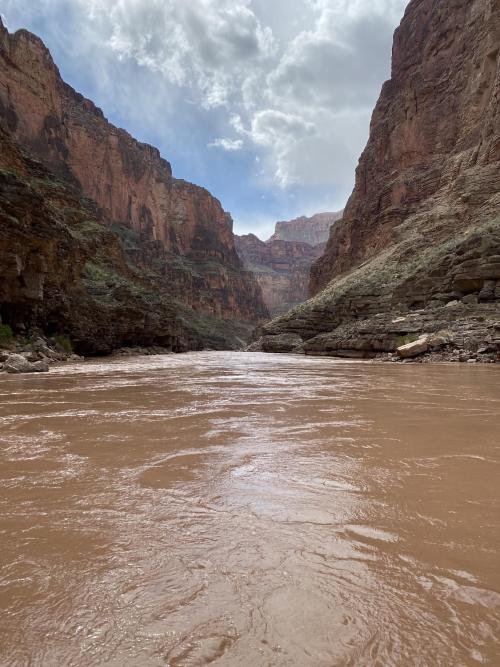
Error 404: Colorado River Water Not Found
Quick Summary
- The EPM Policy Clinic partnered with ICF International to conduct a retrospective analysis of Colorado River management and provide forward looking and innovative recommendations.
This blog is the second in a series of seven, where Environmental Policy and Management students write about the capstone projects they have worked on since January in partnership with external organizations. We want to acknowledge and thank our client, Melissa Harris of ICF International for partnering with us for this project.
The Colorado River sustains essential habitat for wildlife and has provided a life source for indigenous people for over 12,000 years. Modernization and westward expansion utilized the river’s abundant resources, which now supplies water and electricity to 40 million people across seven U.S. states, Mexico, and 30 tribes. However, climate change and increasing water demand are the biggest threats to the river’s existence and the livelihood of the American Southwest.
The Bureau of Reclamation, the Colorado River “water master”, declared an unprecedented water shortage in 2021 but water levels continue to decline. To better understand the dire situation, EPM partnered with ICF International, an environmental consulting firm, to conduct a retrospective analysis of Colorado River management and provide forward looking and innovative recommendations.
We are a group of second year EPM students with diverse educational backgrounds and professional experience, yet we have a shared interest in exploring water management in the West. The timing window of our project with ICF is ideal because the Bureau of Reclamation is reevaluating and restructuring existing drought operation policies in 2026. ICF had a prior role as the lead consultant for the original 2007 guidelines as Jones and Stokes Associates – which was acquired by ICF in 2008. We are thrilled about this opportunity to provide innovative insights and radical solutions through an environmental justice lens during these pivotal times!
Guidance of the river is informed by varying groups, such as federal, state, and tribal governments, environmental organizations, water districts, and users, each with differing influence and priorities in its management. Along with our analysis of past and present guidelines for the Colorado River, we developed three narratives describing opportunistic futures in the Basin.
Our narratives explore ways to improve ecosystem health through established water flows to Mexico, increase agricultural water conservation efforts, and address issues of tribal water access. We chose these topics for our narratives because our research of current guidelines showed that these were not adequately prioritized.
As the socioeconomic, climatic, and ecological conditions of the Colorado River continue to change, the ideas presented in our narratives are adaptable to different strategies for the post-2026 guidelines. We are excited to be a part of one of the most pressing and important issues of the 21st century.

